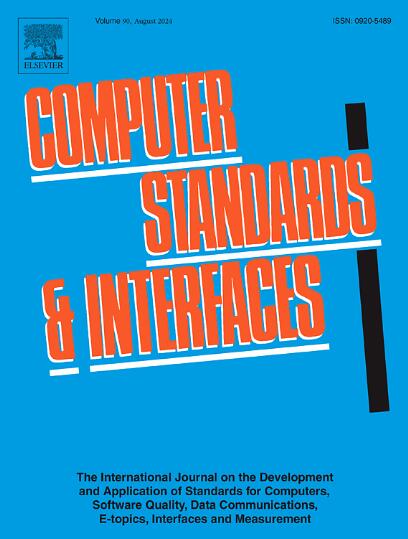Signer revocability for threshold ring signatures
IF 3.1
2区 计算机科学
Q1 COMPUTER SCIENCE, HARDWARE & ARCHITECTURE
引用次数: 0
Abstract
-out-of- threshold ring signature (TRS) is a type of anonymous signature designed for signers to jointly sign a message while hiding their identities among parties that include themselves. However, can TRS address those needs if one of the signers wants to revoke his signature? Can non-signers be clipped without compromising anonymity? Current research has only addressed the functionally opposite property, namely, extendability. In this paper, we introduce the revocability of TRS, addressing the need for improved flexibility and privacy security. Specifically, we innovatively define two properties: revocability, allowing signers to revoke their identities non-interactively and update the signature from -out-of- to -out-of-; and clippability, enabling removal of non-signers from the ring. The synergy of these two properties enables dynamic revocation while keeping the signature size minimal. We analyze and define the boundaries of these operations, provide the DL-based constructions, and prove the security of the schemes. The asymptotic complexity of our approach reaches the same level as that of existing solutions, and especially when using larger ring sizes, experimental results demonstrate that it can effectively reduce the signature size.
阈值环签名的签名者可撤销性
t-out- n阈值环签名(TRS)是一种匿名签名,为t个签名者共同签署消息而设计,同时在包括他们自己在内的n个参与方中隐藏他们的身份。但是,如果其中一个签名者想要撤销他的签名,TRS能满足这些需求吗?是否可以在不影响匿名性的情况下删除非签名者?目前的研究只涉及功能相反的性质,即可扩展性。在本文中,我们介绍了TRS的可撤销性,解决了提高灵活性和隐私安全性的需求。具体来说,我们创新地定义了两个属性:可撤销性,允许签署人非交互地撤销他们的身份,并将签名从t-out- n更新到t- 1-out- n;和可剪切性,使非签名从环移除。这两个属性的协同作用支持动态撤销,同时保持签名大小最小。我们分析并定义了这些操作的边界,给出了基于dl的构造,并证明了这些方案的安全性。该方法的渐近复杂性达到了与现有方法相同的水平,特别是在使用更大的环尺寸时,实验结果表明该方法可以有效地减小签名大小。
本文章由计算机程序翻译,如有差异,请以英文原文为准。
求助全文
约1分钟内获得全文
求助全文
来源期刊

Computer Standards & Interfaces
工程技术-计算机:软件工程
CiteScore
11.90
自引率
16.00%
发文量
67
审稿时长
6 months
期刊介绍:
The quality of software, well-defined interfaces (hardware and software), the process of digitalisation, and accepted standards in these fields are essential for building and exploiting complex computing, communication, multimedia and measuring systems. Standards can simplify the design and construction of individual hardware and software components and help to ensure satisfactory interworking.
Computer Standards & Interfaces is an international journal dealing specifically with these topics.
The journal
• Provides information about activities and progress on the definition of computer standards, software quality, interfaces and methods, at national, European and international levels
• Publishes critical comments on standards and standards activities
• Disseminates user''s experiences and case studies in the application and exploitation of established or emerging standards, interfaces and methods
• Offers a forum for discussion on actual projects, standards, interfaces and methods by recognised experts
• Stimulates relevant research by providing a specialised refereed medium.
 求助内容:
求助内容: 应助结果提醒方式:
应助结果提醒方式:


